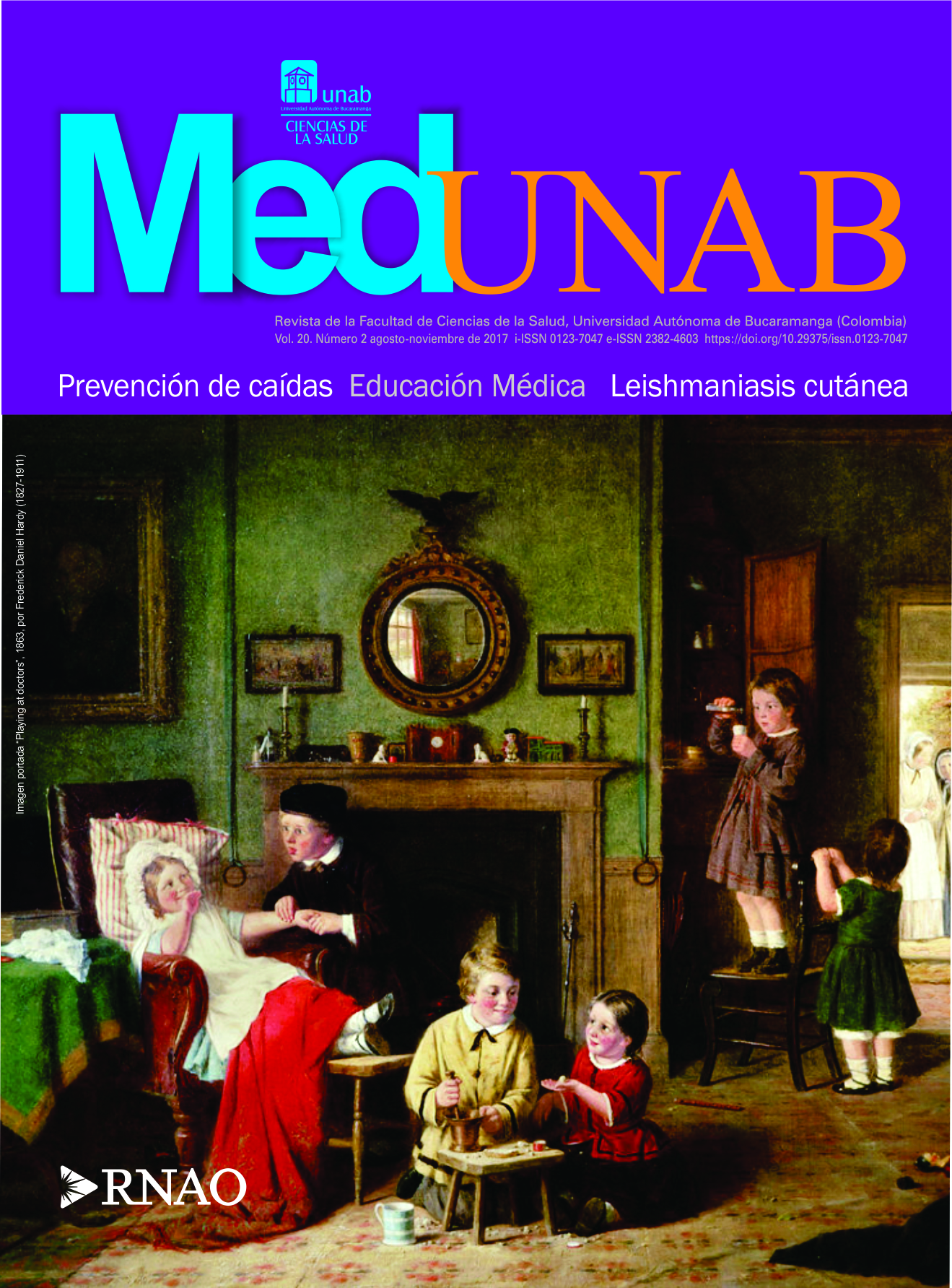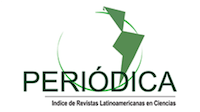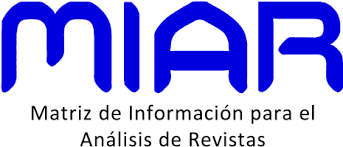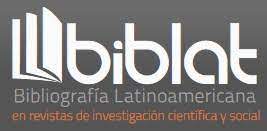Uso de la resonancia magnética y la tomografía computarizada en diagnóstico postmortem
Resumen
Introducción: Ante la naturaleza heterogénea, complejidad inherente de la actividad de peritaje en medicina legal, el perito (profesional de la medicina o áreas afines) debe hacer el mejor uso de las herramientas técnicas y tecnológicas de las cuales disponga. La imagenología, referente al conjunto de las técnicas que permiten obtener imágenes del cuerpo humano con fines clínicos o científicos, en cualquiera de sus técnicas, reviste una potente herramienta de apoyo estableciendo hechos o pruebas técnicas en el campo legal. Objetivo: Analizar el uso de la resonancia magnética y la tomografía computarizada en el diagnóstico postmortem. Metodología: Se realizó búsqueda de información en las bases de datos PubMed, Science Direct, Springer Journal y en el motor de búsqueda Google Académico, usando los términos “Tomografía Computarizada por Rayos X”, “Espectroscopía de Resonancia Magnética”, “Autopsia” y “Medicina Legal” publicados en el periodo 2008-2015. Resultados: La resonancia magnética es útil para el estudio detallado de tejidos blandos y órganos, mientras que la tomografía computarizada permite la identificación de fracturas, calcificaciones, implantes y traumas. Conclusiones: En los reportes hallados en la búsqueda bibliográfica, en cuanto al uso de la resonancia magnética nuclear y la tomografía computarizada en casos postmortem, nombrados por la génesis del trauma, se halló correlación entre la utilización de la imagen y el correcto diagnóstico pericial en la autopsia. [Najar-Céspedes AP, Fuentes-Martínez EDJ. Uso de la resonancia magnética y la tomografía computarizada en diagnóstico postmortem. MedUNAB 2017; 20(2): 190-200].
Referencias bibliográficas
2. Butchart A, Mikton C, Dahlberg LL, Krug EG. Global status report on violence prevention 2014. Inj Prev. 2015;21(3):213.
3. Legal INdM, Violencia GCdRNs. Forensis 2015. Datos para la vida. . 1 ed. Colombia2016. p. 729.
4. Payne-James JJ, Stark MM. Clinical Forensic Medicine: History and Development. In: Stark MM, editor. Clinical Forensic Medicine: A Physician's Guide. Totowa, NJ: Humana Press; 2011. p. 1-44.
5. Ludwig J. Postmortem Imaging Techniques. In: Waters BL, editor. Handbook of Autopsy Practice. Totowa, NJ: Humana Press; 2009. p. 99-103.
6. Medical-Legal Aspects. Radiological Reporting in Clinical Practice. Milano: Springer Milan; 2008. p. 27-38.
7. Arce Mateos FP, Fernández Fernández FÁ, Mayorga Fernández MM, Gómez Román J, Val Bernal JF. La autopsia clínica. 2009;7(1):10.
8. Flach PM, Thali MJ, Germerott T. Times have changed! Forensic radiology--a new challenge for radiology and forensic pathology. AJR Am J Roentgenol. 2014;202(4):W325-34.
9. Common Sense in Clinical and Preclinical Diagnosis. Radiological Reporting in Clinical Practice. Milano: Springer Milan; 2008. p. 79-80.
10. Thali MJ, Jackowski C, Oesterhelweg L, Ross SG, Dirnhofer R. VIRTOPSY - the Swiss virtual autopsy approach. Leg Med (Tokyo). 2007;9(2):100-4.
11. Tejaswi KB, Hari Periya EA. Virtopsy (virtual autopsy): A new phase in forensic investigation. J Forensic Dent Sci. 2013;5(2):146-8.
12. Thayyil S, Chandrasekaran M, Chitty LS, Wade A, Skordis-Worrall J, Bennett-Britton I, et al. Diagnostic accuracy of post-mortem magnetic resonance imaging in fetuses, children and adults: a systematic review. Eur J Radiol. 2010;75(1):e142-8.
13. Thali MJ, Yen K, Schweitzer W, Vock P, Boesch C, Ozdoba C, et al. Virtopsy, a new imaging horizon in forensic pathology: Virtual autopsy by postmortem multislice computed tomography (MSCT) and magnetic resonance imaging (MRI) - a feasibility study. Journal of Forensic Sciences. 2003;48(2):386-403.
14. Stawicki SP, Aggrawal A, Dean AJ, Bahner DA, Steinberg SM, Stehly CD, et al. Postmortem use of advanced imaging techniques:Is autopsy going digital? OPUS 12 Scientist. 2008;2(4):17-26.
15. Investor's Business D. MRI prices all over the map. Investors Business Daily. 2015:A02.
16. Levy AD. Postmortem Radiology and ImagingPostmortem Radiology and Imaging 2012 [Available from: http://emedicine.medscape.com/article/1785023-overview.
17. Vogel H, Houck JASJSM. Postmortem Imaging. Encyclopedia of Forensic Sciences. Waltham: Academic Press; 2013. p. 243-60.
18. Waters BL. Ensuring Quality in the Hospital Autopsy. In: Waters BL, editor. Handbook of Autopsy Practice. Totowa, NJ: Humana Press; 2009. p. 3-9.
19. Lequin MH, Huisman TAGM. Postmortem MR Imaging in the Fetal and Neonatal Period. Magnetic Resonance Imaging Clinics of North America. 2012;20(1):129-43.
20. Koch V. Methodenvergleich zwischen postmortaler CT und MRT Bildgebung in der forensischen Begutachtung: Graz Medical University; 2009.
21. Jeffery AJ. The role of computed tomography in adult post-mortem examinations: an overview. Diagnostic Histopathology. 2010;16(12):546-51.
22. Grover VP, Tognarelli JM, Crossey MM, Cox IJ, Taylor-Robinson SD, McPhail MJ. Magnetic Resonance Imaging: Principles and Techniques: Lessons for Clinicians. J Clin Exp Hepatol. 2015;5(3):246-55.
23. Sederman AJ, Wang M. 4 - Magnetic resonance imaging. Industrial Tomography: Woodhead Publishing; 2015. p. 109-33.
24. Nitz WR, Balzer T, Grosu DS, Allkemper T. Principles of Magnetic Resonance. In: Reimer P, Parizel PM, Meaney JFM, Stichnoth FA, editors. Clinical MR Imaging. Berlin, Heidelberg: Springer Berlin Heidelberg; 2010. p. 1-105.
25. Thayyil S, Chitty LS, Robertson NJ, Taylor AM, Sebire NJ. Minimally invasive fetal postmortem examination using magnetic resonance imaging and computerised tomography: current evidence and practical issues. Prenat Diagn. 2010;30(8):713-8.
26. Panda A, Kumar A, Gamanagatti S, Mishra B. Virtopsy Computed Tomography in Trauma: Normal Postmortem Changes and Pathologic Spectrum of Findings. Curr Probl Diagn Radiol. 2015;44(5):391-406.
27. Cierniak R. Technical Concepts of X-ray Computed Tomography Scanners. X-Ray Computed Tomography in Biomedical Engineering. London: Springer London; 2011. p. 21-62.
28. De la Cerda Romero A. Equipos de Tomografia Computerizada (TAC). Revista Digital para Profesionales de la Ensenanza. 2009; 5.
29. Busardo F, Frati P, Guglielmi G, Grilli G, Pinto A, Rotondo A, et al. Postmortem-computed tomography and postmortem-computed tomography-angiography: a focused update. Radiologia Medica. 2015;120(9):810-23.
30. Brough A, Morgan B, Rutty G. Postmortem computed tomography (PMCT) and disaster victim identification. Radiologia Medica. 2015;120(9):866-73.
31. Stake RE. Investigación con estudio de casos. 2000.
32. Thayyil S, De Vita E, Sebire NJ, Bainbridge A, Thomas D, Gunny R, et al. Post-mortem cerebral magnetic resonance imaging T1 and T2 in fetuses, newborns and infants. European Journal of Radiology. 2012;81(3):e232-e8.
33. Zhang Z, Liu S, Lin X, Sun B, Yu T, Geng H. Development of fetal cerebral cortex: assessment of the folding conditions with post-mortem Magnetic Resonance Imaging. International Journal of Developmental Neuroscience. 2010;28(6):537-43.
34. Pedraza S. [Usefulness of magnetic resonance imaging in traumatic brain injury]. Med Intensiva. 2013;37(6):373-4.
35. Yushkevich PA, Avants BB, Pluta J, Das S, Minkoff D, Mechanic-Hamilton D, et al. A high-resolution computational atlas of the human hippocampus from postmortem magnetic resonance imaging at 9.4 T. Neuroimage. 2009;44(2):385-98.
36. Colleran GC, Moynagh MR, Tavernaraki K, Shelly MJ, Eustace SJ, Kavanagh EC. Whole-body magnetic resonance imaging: emerging applications. Semin Musculoskelet Radiol. 2010;14(1):57-67.
37. Jackowski C, Christe A, Sonnenschein M, Aghayev E, Thali MJ. Postmortem unenhanced magnetic resonance imaging of myocardial infarction in correlation to histological infarction age characterization. European Heart Journal. 2006;27(20):2459-67.
38. Bisset RAL, Thomas NB, Turnbull IW, Lee S. Postmortem examinations using magnetic resonance imaging: four year review of a working service. British Medical Journal. 2002;324(7351):1423-4.
39. Jackowski C, Warntjes MJB, Berge J, Bar W, Persson A. Magnetic resonance imaging goes postmortem: noninvasive detection and assessment of myocardial infarction by postmortem MRI. European Radiology. 2011;21(1):70-8.
40. Ruder TD, Paula P, Hatch GM, Ampanozi G, Thali MJ, Schweitzer W. Science into practice: Post-mortem imaging provides conclusive evidence in a non-suspicious death. Journal of Forensic Radiology and Imaging. 2014;2(2):80-4.
41. Taylor AM, Sebire NJ, Ashworth MT, Schievano S, Scott RJ, Wade A, et al. Postmortem cardiovascular magnetic resonance imaging in fetuses and children: a masked comparison study with conventional autopsy. Circulation. 2014;129(19):1937-44.
42. Rosales Uvera SG, Morelos Guzmán M, Vázquez Lamadrid J. Cor triatriatum dexter: Uso de resonancia magnética cardiovascular en su diagnóstico a propósito de un caso. Revista mexicana de cardiología. 2012;23:12-6.
43. Narin B, Arman A, Arslan D, Simsek M, Narin A. Assessment of cardiac masses: magnetic resonance imaging versus transthoracic echocardiography. Anadolu Kardiyol Derg. 2010;10(1):69-74.
44. Breeze AC, Jessop FA, Set PA, Whitehead AL, Cross JJ, Lomas DJ, et al. Minimally-invasive fetal autopsy using magnetic resonance imaging and percutaneous organ biopsies: clinical value and comparison to conventional autopsy. Ultrasound Obstet Gynecol. 2011;37(3):317-23.
45. Peschel O, Szeimies U, Vollmar C, Kirchhoff S. Postmortem 3-D reconstruction of skull gunshot injuries. Forensic Sci Int. 2013;233(1-3):45-50.
46. Patowary A. Virtopsy: One step forward in the field of forensic medicine. Journal of Indian Academic of Forensic Medicine. 2008;30(1):32-6.
47. Cha JG, Kim DH, Paik SH, Park JS, Park SJ, Lee HK, et al. Utility of postmortem autopsy via whole-body imaging: initial observations comparing MDCT and 3.0 T MRI findings with autopsy findings. Korean J Radiol. 2010;11(4):395-406.
48. Yen K, Sonnenschein M, Thali MJ, Ozdoba C, Weis J, Zwygart K, et al. Postmortem multislice computed tomography and magnetic resonance imaging of odontoid fractures, atlantoaxial distractions and ascending medullary edema. International Journal of Legal Medicine. 2005;119(3):129-36.
49. Shiotani S, Shiigai M, Ueno Y, Sakamoto N, Atake S, Kohno M, et al. Postmortem computed tomography findings as evidence of traffic accident-related fatal injury. Radiat Med. 2008;26(5):253-60.
50. Flach PM, Ross SG, Bolliger SA, Preiss US, Thali MJ, Spendlove D. Postmortem Whole-Body Computed Tomography Angiography Visualizing Vascular Rupture in a Case of Fatal Car Crash. Archives of Pathology & Laboratory Medicine. 2010;134(1):115-9.
51. Filograna L, Bolliger SA, Ross SG, Ruder T, Thali MJ. Pros and cons of post-mortem CT imaging on aspiration diagnosis. Leg Med (Tokyo). 2011;13(1):16-21.
52. Sogawa N, Michiue T, Ishikawa T, Inamori-Kawamoto O, Oritani S, Maeda H. Postmortem CT morphometry of great vessels with regard to the cause of death for investigating terminal circulatory status in forensic autopsy. Int J Legal Med. 2015;129(3):551-8.
53. Raux C, Saval F, Rouge D, Telmon N, Dedouit F. Diagnosis of drowning using post-mortem computed tomography - state of the art. Arch Med Sadowej Kryminol. 2014;64(2):59-75.
54. Lo Re G, Vernuccio F, Galfano MC, Picone D, Milone L, La Tona G, et al. Role of virtopsy in the post-mortem diagnosis of drowning. Radiol Med. 2015;120(3):304-8.
55. Fischer F, Grimm J, Kirchhoff C, Reiser MF, Graw M, Kirchhoff S. Postmortem 24-h interval computed tomography findings on intrahepatic gas development and changes of liver parenchyma radiopacity. Forensic Sci Int. 2012;214(1-3):118-23.
56. Takahashi N, Higuchi T, Shiotani M, Maeda H, Hirose Y. Intrahepatic gas at postmortem multislice computed tomography in cases of nontraumatic death. Jpn J Radiol. 2009;27(7):264-8.
57. Jackowski C, Sonnenschein M, Thali MJ, Aghayev E, Yen K, Dirnhofer R, et al. Intrahepatic gas at postmortem computed tomography: forensic experience as a potential guide for in vivo trauma imaging. J Trauma. 2007;62(4):979-88.
58. Takahashi N, Higuchi T, Shiotani M, Maeda H, Sasaki O. Multiple lung tumors as the cause of death in a patient with subarachnoid hemorrhage: postmortem computed tomography study. Jpn J Radiol. 2009;27(8):316-9.
59. Lorkiewicz-Muszynska D, Kociemba W, Zaba C, Labecka M, Koralewska-Kordel M, Abreu-Glowacka M, et al. The conclusive role of postmortem computed tomography (CT) of the skull and computer-assisted superimposition in identification of an unknown body. International Journal of Legal Medicine. 2013;127(3):653-60.
60. Dedouit F, Telmon N, Costagliola R, Otal P, Florence LL, Joffre F, et al. New identification possibilities with postmortem multislice computed tomography. Int J Legal Med. 2007;121(6):507-10.
61. Dedouit F, Savall F, Mokrane FZ, Rousseau H, Crubezy E, Rouge D, et al. Virtual anthropology and forensic identification using multidetector CT. Br J Radiol. 2014;87(1036):20130468.
Descargas
| Estadísticas de artículo | |
|---|---|
| Vistas de resúmenes | |
| Vistas de PDF | |
| Descargas de PDF | |
| Vistas de HTML | |
| Otras vistas | |






























